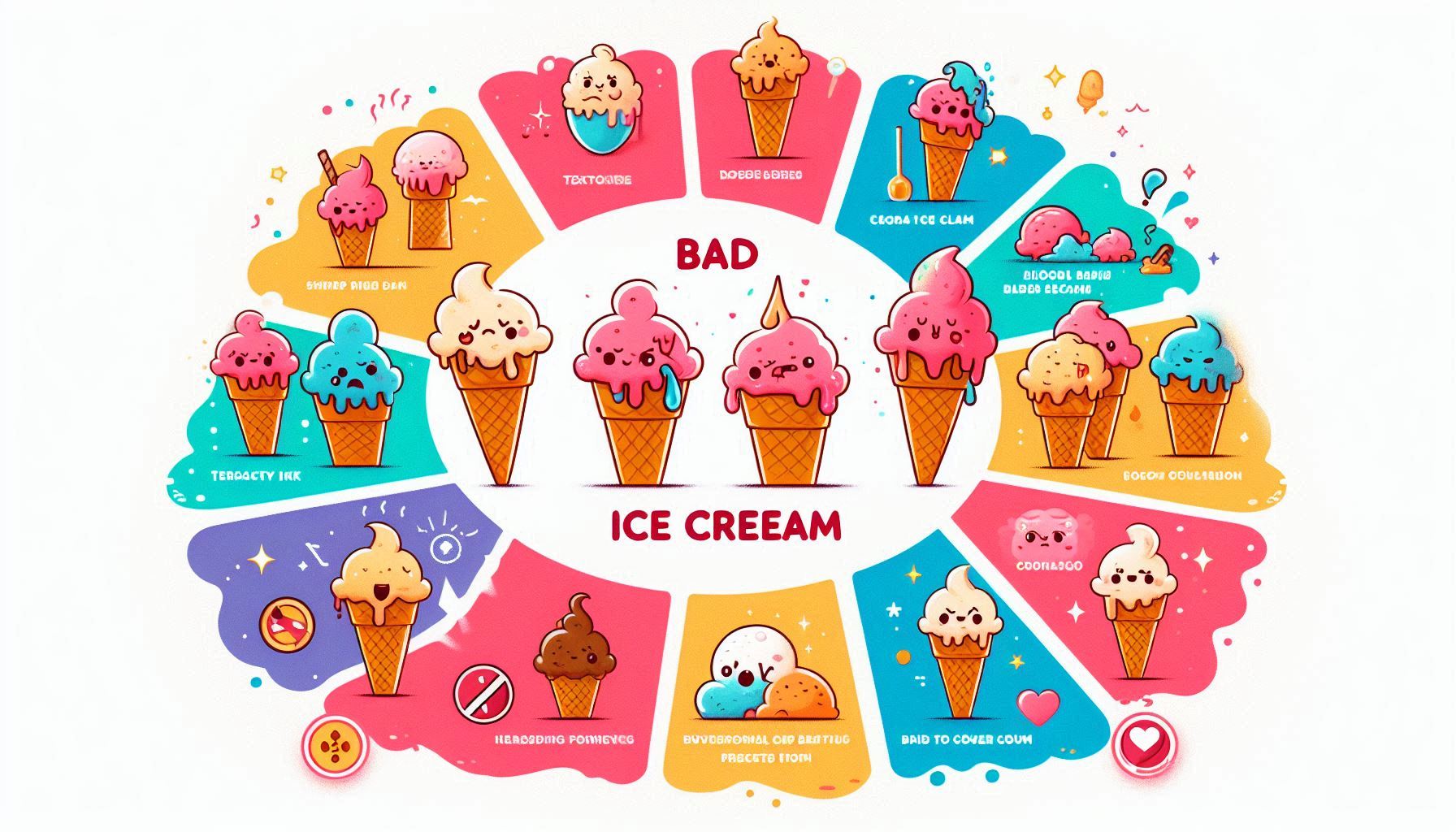
Ice cream is a beloved treat enjoyed by people of all ages. Whether it’s a hot summer day or a cozy winter night, ice cream always seems to hit the spot. However, like all dairy products, ice cream has a limited shelf life, and consuming spoiled ice cream can lead to foodborne illnesses. Knowing how to tell when ice cream is bad is essential for both your health and your enjoyment of this delicious dessert. In this article, we’ll explore the signs of spoiled ice cream, how to store it properly, and answer some frequently asked questions about ice cream safety.
Why Does Ice Cream Go Bad?
Ice cream is a dairy-based product, bad ice cream which means it contains milk, cream, and sometimes eggs. These ingredients are highly perishable and can spoil over time, especially if not stored correctly. Even though ice cream is kept frozen, it’s not immune to degradation. Freezer burn, temperature fluctuations, and contamination can all contribute to ice cream going bad.
Signs That Your Ice Cream Has Gone Bad
Here are the key indicators that your ice cream is no longer safe to eat:
1. Changes in Texture
One of the first signs that ice cream has gone bad is a change in texture. Fresh ice cream should be smooth and creamy. If you notice that your ice cream has become icy, grainy, or has formed large ice crystals, it’s a sign that it has been exposed to temperature fluctuations. This can happen if the ice cream has been thawed and refrozen, which can also lead to bacterial growth.
2. Off-Putting Smell
Spoiled ice cream often develops an unpleasant odor. If your ice cream smells sour, rancid, or just “off,” it’s best to discard it. A strong, unusual smell is a clear indicator that the dairy components have started to spoil.
3. Unusual Color
While some ice creams naturally have vibrant colors due to added ingredients like fruit or food coloring, any unexpected discoloration is a red flag. If you notice brownish or yellowish patches, it could be a sign of freezer burn or spoilage.
4. Strange Taste
If your ice cream tastes sour, bitter, or just not right, spit it out immediately. A strange taste is a definitive sign that the ice cream has gone bad and should not be consumed.
5. Presence of Mold
Although rare, mold can grow on ice cream, especially if it has been left out at room temperature for an extended period. If you see any fuzzy spots or discolored areas, throw the ice cream away.
6. Expired Date
Always check the expiration date on the ice cream container. While ice cream can sometimes last beyond its expiration date if stored properly, it’s still a good idea to use this as a guideline. If the ice cream is past its expiration date and shows any of the above signs, it’s best to err on the side of caution and discard it.
How to Properly Store Ice Cream
Proper storage is key to extending the shelf life of your ice cream and preventing it from going bad. Here are some tips to keep your ice cream fresh and safe to eat:
1. Keep It Frozen
Ice cream should always be stored in the freezer at a temperature of 0°F (-18°C) or lower. Avoid leaving it out at room temperature for more than 10-15 minutes, as this can cause it to melt and refreeze improperly.
2. Use an Airtight Container
If you’ve opened a container of ice cream, make sure to seal it tightly before returning it to the freezer. Exposure to air can lead to freezer burn and spoilage.
3. Avoid Temperature Fluctuations
Frequent temperature changes can cause ice cream to develop ice crystals and spoil faster. Try to minimize how often you open the freezer door, and avoid storing ice cream in the freezer door where temperatures are less stable.
4. Store in the Back of the Freezer
The back of the freezer is typically the coldest and most consistent in temperature. Storing your ice cream here can help prevent it from thawing and refreezing.
5. Don’t Refreeze Melted Ice Cream
If your ice cream has melted completely, it’s best not to refreeze it. The process of melting and refreezing can create an environment where bacteria can thrive.
How Long Does Ice Cream Last?
The shelf life of ice cream depends on several factors, including how it’s stored and whether it’s homemade or store-bought. Here’s a general guideline:
-
Unopened Store-Bought Ice Cream: 2-3 months past the printed expiration date if stored properly.
-
Opened Store-Bought Ice Cream: 1-2 months if stored in an airtight container.
-
Homemade Ice Cream: 1-2 weeks, as it lacks the preservatives found in commercial ice cream.
Can You Get Sick from Eating Bad Ice Cream?
Yes, eating spoiled ice cream can make you sick. Consuming spoiled dairy products can lead to food poisoning, which may cause symptoms like nausea, vomiting, diarrhea, and stomach cramps. In severe cases, it can even lead to more serious health issues. Always trust your senses—if something seems off, it’s better to be safe than sorry.
FAQs About Ice Cream Safety
1. Can you eat ice cream with freezer burn?
Freezer burn doesn’t make ice cream unsafe to eat, but it can affect the texture and flavor. If the ice cream tastes fine, it’s safe to consume, though it may not be as enjoyable.
2. How can I prevent ice cream from going bad?
Store ice cream in the coldest part of your freezer, keep it tightly sealed, and avoid frequent temperature changes.
3. Is it safe to eat ice cream that has been left out overnight?
No, ice cream that has been left out at room temperature for more than 2 hours should be discarded. Bacteria can grow rapidly in melted ice cream.
4. Can I refreeze melted ice cream?
It’s not recommended to refreeze melted ice cream, as this can lead to bacterial growth and spoilage.
5. What’s the best way to scoop ice cream without contaminating it?
Always use a clean, dry scoop to serve ice cream. Avoid double-dipping, as this can introduce bacteria into the container.
Conclusion
Knowing how to tell when ice cream is bad is crucial for both your health and your enjoyment of this delightful treat. By paying attention to changes in texture, smell, color, and taste, you can easily determine whether your ice cream is still safe to eat. Proper storage practices, such as keeping it frozen and sealed tightly, can help extend its shelf life and maintain its quality. Remember, when in doubt, throw it out—your health is worth more than a scoop of ice cream!
By following these tips and guidelines, you can ensure that every bite of ice cream you enjoy is fresh, delicious, and safe. So the next time you reach for that pint, take a moment to check for signs of spoilage. Your taste buds—and your stomach—will thank you!







Leave a Reply